Written by Jane Foster
Feb 26, 2019
Home to some of the world's most important historical sites, along with some 6,000 islands, Greece is known for its natural beauty and fascinating culture. Ancient archaeological sites, cliffs tumbling into sparkling blue water, sand and pebble beaches, and a balmy Mediterranean climate make Greece one of Europe's prime tourist destinations.
Besides the capital, Athens, top things to see on the mainland include Ancient Delphi and the monasteries of Meteora. But most people come here to catch a ferry to the islands; Santorini, Mykonos, Zakynthos, Corfu, and Crete are the most popular. Plan your trip with our list of the top attractions in Greece.
The best way το save money on travelling to Greece is to book all services on Following links .
The best way το save money on travelling to Greece is to book all services on Following links .
1. Acropolis, Athens
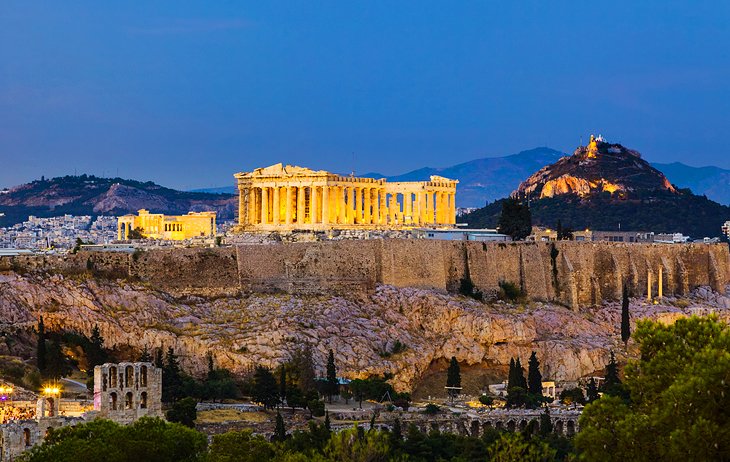
Acropolis, Athens
Considered the symbol of Athens and Greece, and indeed of Western civilization, the Acropolis is a rocky mound rising in the heart of modern Athens, crowned by three magnificent temples dating from the 5th century BC. The best known and most distinctive is the Parthenon, originally made up of 58 columns supporting a roof and decorated by ornate pediments and a frieze.
Skirting the foot of the Acropolis and connecting it to the city's other major ancient attractions — the Ancient Agora , the Roman Forum, Kerameikos, and the Temple of Olympian Zeus — is a 2.5-kilometer walking path known as the Archaeological Promenade.
- 2. Acropolis Museum, Athens

Acropolis Museum, Athens | Maarten / photo modified
The Acropolis Museum is one of Athens' most-visited tourist attractions. Designed by Swiss architect Bernard Tschumi, it is an ultra-modern glass and steel structure with light and airy exhibition spaces, built specifically to display ancient finds from the Acropolis.
Top things to see here include the 6th-century-BC Moschophoros (statue of a young man carrying a calf on his shoulders), the Caryatids (sculptures of female figures that held up the Erechtheion), and the highly controversial Parthenon marbles. From the museum's cafe-restaurant terrace, you can enjoy amazing views of the Acropolis itself.
3. Santorini
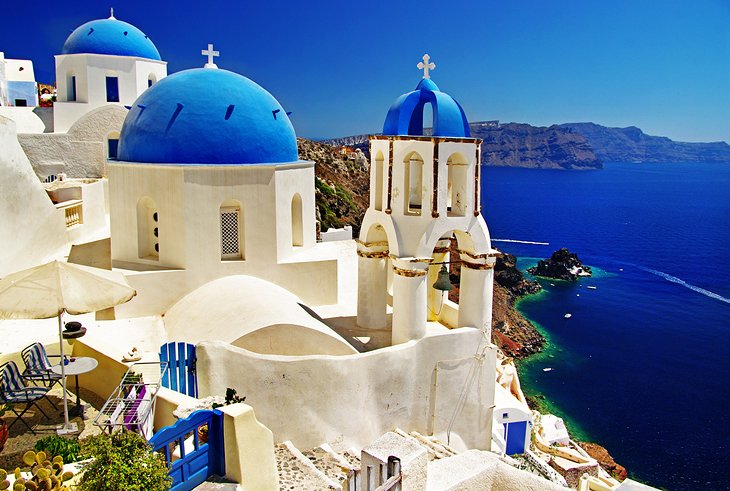
Santorini
Stunning Santorini is the most dramatic of all the Greek isles. It is best known for the west coast cliff-top towns of Fira and Oia, which appear to hang over a deep, blue sea-filled caldera. Made up of typical Cycladic whitewashed cubic buildings, many of which have been converted into boutique hotels with infinity pools, both Fira and Oia are considered romantic destinations, popular for weddings and honeymoons.
Things to do in Santorini include sunbathing and swimming at the black volcanic-sand beaches on the south and east coasts and visiting the archaeological site of Akrotiri, an Ancient Minoan settlement buried below lava following the volcanic eruption that created the caldera, some 3,600 years ago. The island has an airport and is served by ferries and catamarans from Athens' port, Piraeus.
4. Mykonos
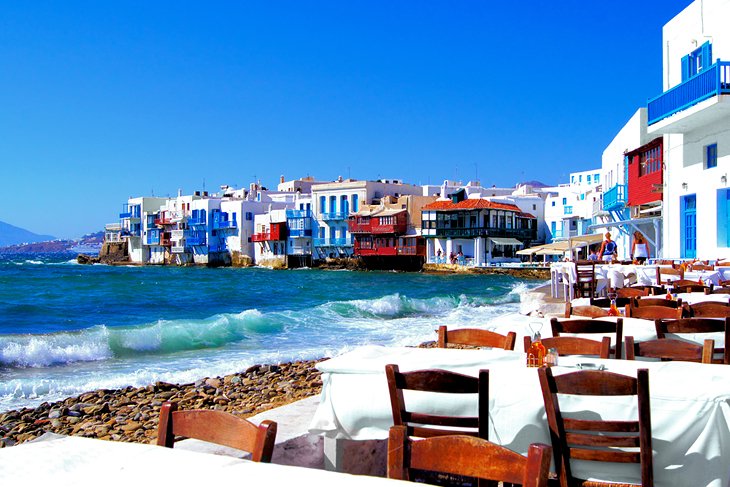
Mykonos
Greece's most glamorous island destination is Mykonos. After-dark activities center on Mykonos Town, noted for its chic boutique hotels, classy seafood restaurants, and live music venues. Other attractions include Paraportiani (a whitewashed church in Mykonos Town) and numerous sandy beaches along the island's south coast (served both by bus and taxi-boat from Mykonos Town). The island is particularly popular with international celebrities. Mykonos has an airport and is connected by ferry and catamaran to Athens' port, Piraeus, and Rafina.
5. Delphi
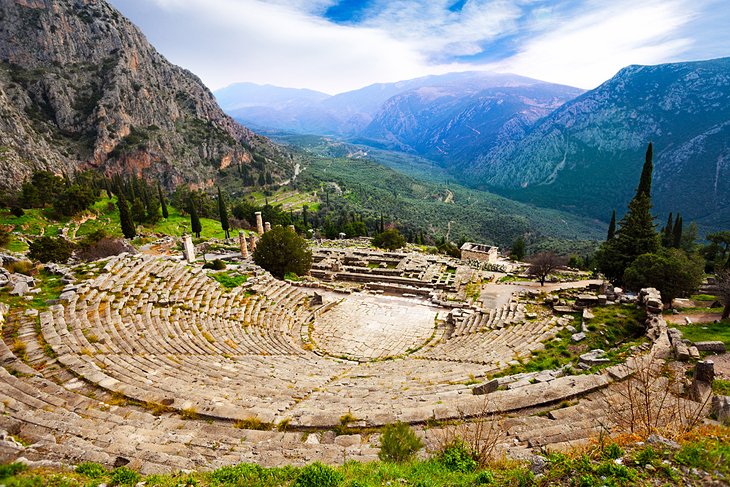
Delphi
On the Greek mainland, Delphi is a UNESCO World Heritage site. Built on the lower slopes of Mount Parnassus, overlooking a dramatic ravine, the site was sacred to the ancients, who came here on pilgrimages to worship Apollo (god of light, prophecy, music, and healing) and to ask advice from the mythical Oracle. It is made up of the crumbling ruins of numerous temples, a theater, and stadium, dating from between the 8th century BC and the 2nd century AD. Nearby, stands the Delphi Archaeological Museum, displaying an impressive collection of finds from the site. Delphi lies 180 kilometers northwest of Athens.
- 6. Corfu
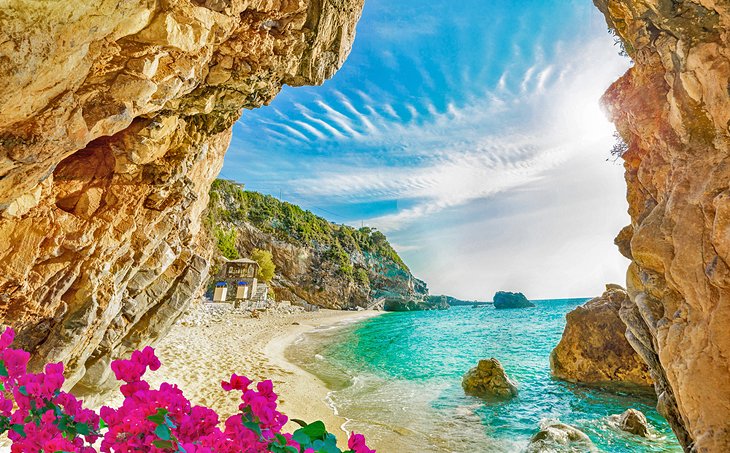
One of Greece's top tourist destinations, Corfu sits in the Ionian Sea off the west coast of the mainland. The capital, Corfu Town, is a UNESCO World Heritage site, thanks to its elegant Italianate architecture — it was ruled by the Venetians for several centuries. Explore its romantic pedestrian-only streets to discover two 16th-century fortresses and the arcaded Liston, lined by old-fashioned cafes.
Away from the main town, the island is lushly beautiful, with rugged limestone rocks tumbling into the sea in its north and velvety green hills in its south. The most popular beach area is Paleokastritsa, on the west coast, about 25-kilometers from Corfu Town. Here, you'll find a collection of deep, curving bays sheltering sand and pebble beaches stretching into a clear blue sea. Corfu is served by an airport and ferries from Igoumenitsa and Patras on the Greek mainland. In summer, ferries sailing from Ancona and Venice also stop here.
7. Metéora Monasteries
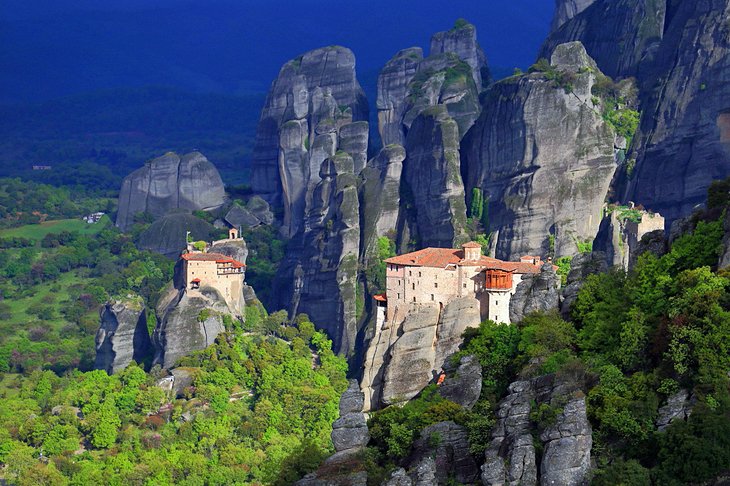
Metéora Monasteries
One of the most unusual things to see in Greece has to be the Thessaly Plain, where bizarre rocky outcrops are capped by the centuries-old monasteries of Metéora. On the UNESCO World Heritage list, six of the monasteries are open to the public. You need to climb up several flights of stone steps carved into the rocks to reach each monastery, and inside, you'll find flickering candles, religious icons, Byzantine frescoes, and burning incense. Opening hours vary, and to see all six monasteries, you need to spend at least one day in the area. The nearest town is Kalambaka.
- 8. Rhodes Town
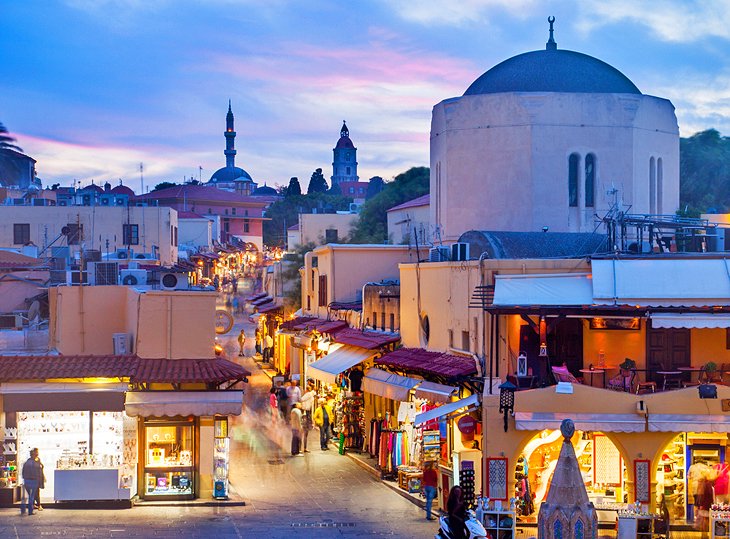
Rhodes Town
Lying on the Aegean Sea, close to Turkey, Rhodes is the largest of the Dodecanese islands. Its capital, UNESCO-listed Rhodes Town, is one of Greece's top tourist destinations. It is enclosed by an impressive fortification system, including monumental towers and gates built by the Knights of St. John after they took control of the island in the 14th century.
The car-free cobbled streets of the old town are a joy to explore on foot. Nearby attractions include the pretty hillside coastal town of Lindos, and Marmaris on the Turkish coast, which can be visited by excursion boat. Rhodes is served by an airport, as well as regular ferries from Athens' port, Piraeus.
9. Zákynthos
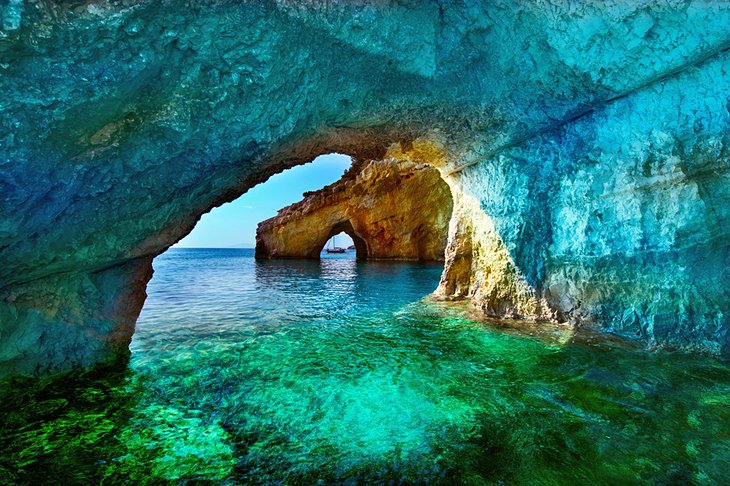
Home to gorgeous scenery both above and under the sea surrounding it, Zákynthos (Zante) island is another top tourist destination in Greece. It is also easy to access, with a locale just 16 kilometers off Peloponnese's west coast in the Ionian Sea.
Two of the biggest boasts on this geographically intriguing island are its pebble and sand beaches — Shipwreck Beach is the most famous — and stunning sea caves like the Blue Caves, off the island's northern tip. Inside, the sparkling water reflects the color of the blue sky on the cave walls to create a magical glow. The Blue Caves are only one of the many watery attractions around this island. There is also excellent snorkeling and scuba diving.
- 10. Samaria Gorge
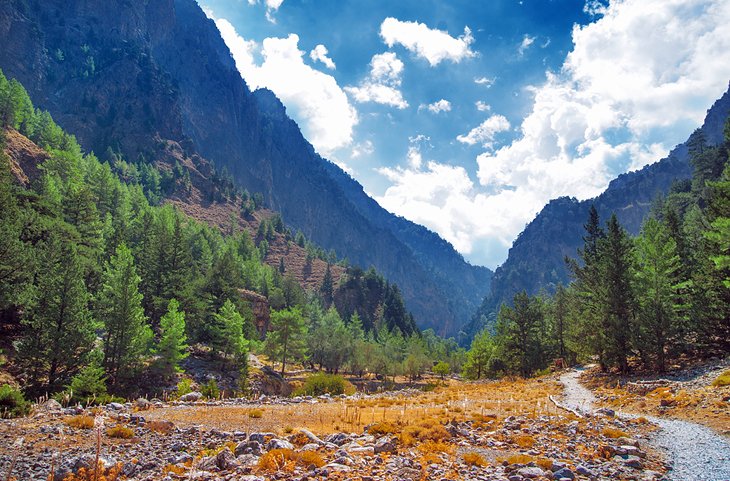
Samaria Gorge
On the island of Crete, the Samaria Gorge is a top attraction for lovers of the great outdoors. Measuring 16 kilometers in length and, at its narrowest point, only four meters wide, it runs from Omalos (1,250 meters) in the White Mountains down to Agia Roumeli, on the Libyan Sea.
Depending on your level of fitness, it will take five to seven hours to walk. It is steep in parts and rocky, so you should wear good hiking shoes and carry plenty of water. The gorge lies within the Samaria National Park, and is on the UNESCO tentative list. Through summer, organized tours depart from
11. Nafplio
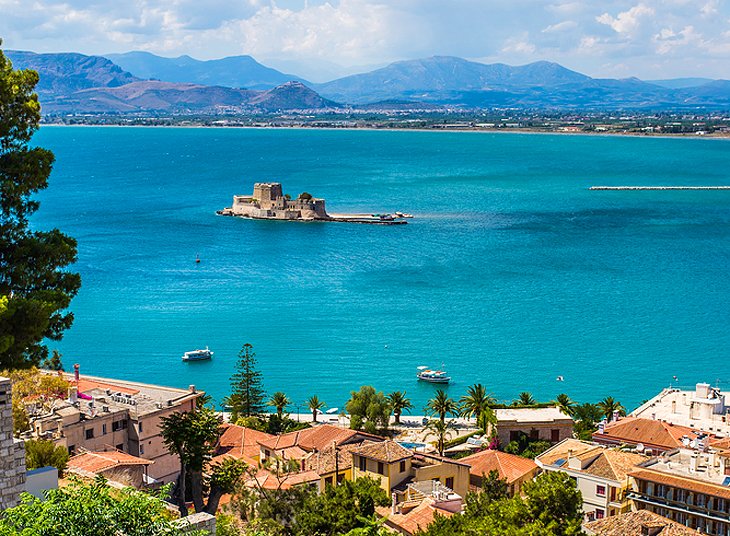
Nafplio
Often cited as Greece's most beautiful city, Nafplio is a popular weekend destination for wealthy Athenians. Built on a small peninsular on the east coast of the Peloponnese, it became the first capital of modern Greece in 1828 before Athens took over in 1834. The car-free old town is filled with Neoclassical mansions and proud churches and overlooked by the 18th-century Palamidi Fortress. Nearby attractions include Tiryns, Epidaurus Theater, and Ancient Corinth.
Accommodation: Where to Stay in Nafplio
12. Thessaloniki
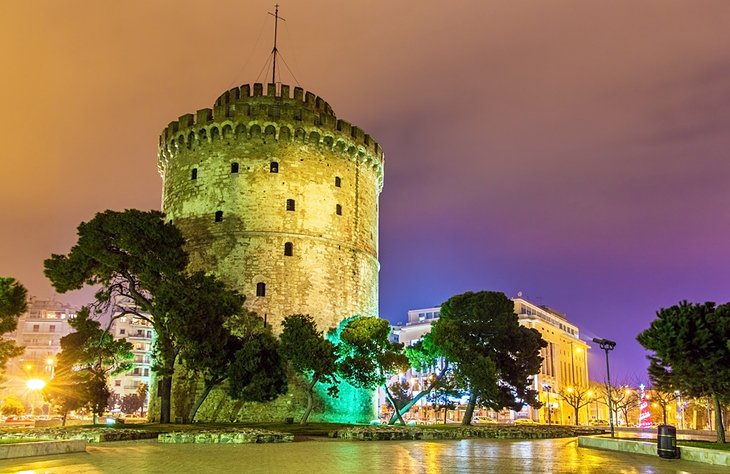 Thessaloniki
Thessaloniki
 Thessaloniki
Thessaloniki
Overlooking the Aegean Sea in northern Greece, Thessaloniki (Salonica) is the country's second biggest city after Athens. Founded in 316 BC due to its position close to both Bulgaria and Turkey, it has always been a crossroads of various cultures and religions. Its main sightseeing attractions are its UNESCO-listed Byzantine churches, but there are also several Roman monuments (including the Triumphal Arch of Galerius and the 4th-century Rotunda), the 15th-century White Tower on the seafront, and an excellent Byzantine Museum.


Δεν υπάρχουν σχόλια:
Δημοσίευση σχολίου